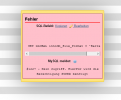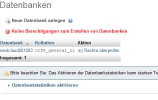Hello,
i'm a complete newbie to plesk.
In Strato I have a dedicated server with the following version:
I want to install nextcloud as an extension so that nextcloud is in webroot. Also example.domain.de.
I have a given domain from strato in the domains ht3456xxx.strato.de and have created a new domain namely example.domain.de. Nextcloud should then be directly accessible here. I installed nextcloud here as an extension. But now you can access the nextcloud at example.domain.de\nextcloud. The nextcloud should however be accessible at example.domain.de. If I want to remove the specified h3456xxxx.strato.de website, which has been in existence from the start, the example.domain.de is also removed. Sorry for my terrible english.
I hope you can help me. there is probably a simple solution.
Thanks!
i'm a complete newbie to plesk.
In Strato I have a dedicated server with the following version:
| Plesk Obsidian v18.0.31_build1800201127.17 os_CentOS 7 |
I want to install nextcloud as an extension so that nextcloud is in webroot. Also example.domain.de.
I have a given domain from strato in the domains ht3456xxx.strato.de and have created a new domain namely example.domain.de. Nextcloud should then be directly accessible here. I installed nextcloud here as an extension. But now you can access the nextcloud at example.domain.de\nextcloud. The nextcloud should however be accessible at example.domain.de. If I want to remove the specified h3456xxxx.strato.de website, which has been in existence from the start, the example.domain.de is also removed. Sorry for my terrible english.
I hope you can help me. there is probably a simple solution.
Thanks!




